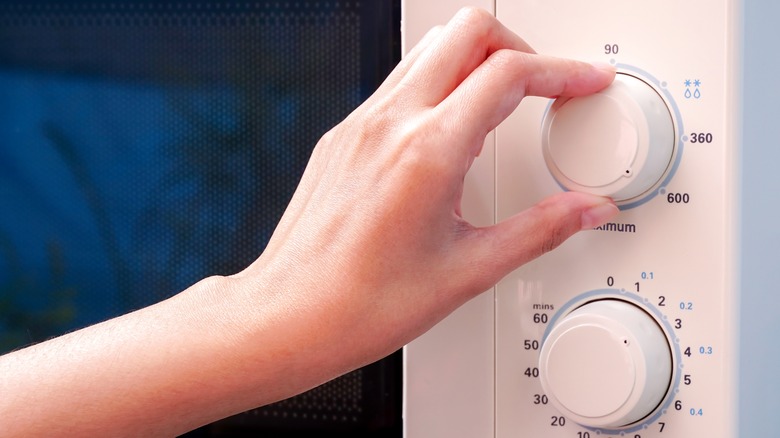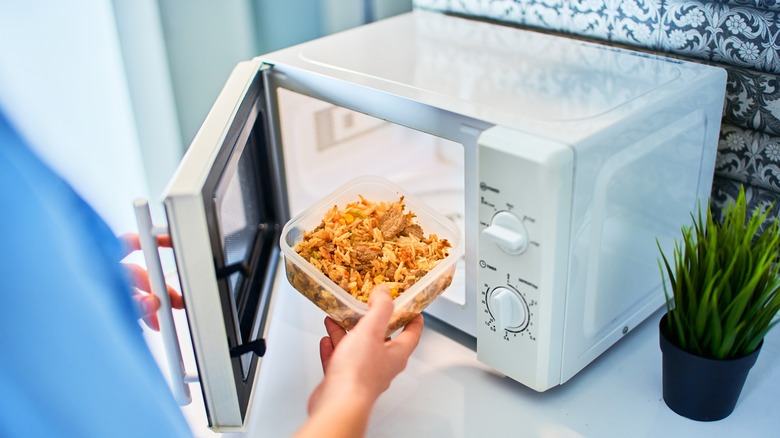Why You Should Avoid Your Microwave's Full Power Option When Reheating Food
Today, more than 90% of households in the United States have a microwave (according to the U.S. Bureau Of Labor Statistics). Although they've been around for more than half a century now, a lot of people still use their microwaves wrong, mainly by heating everything at full power. Sure, the convenience of a microwave makes it easy to throw some leftovers in a bowl or on a plate and use one of the Express Cook buttons, which starts heating at the highest temperature for the respective amount of time. However, there are two main reasons why you shouldn't reheat food at full power.
The first reason is that the microwave heating process can be uneven, which is why parts of a reheated dish can be hotter than others (sometimes overcooked), which are known as "cold spots." Underheated leftovers are a health and safety concern because they can cause illness, just like fresh food that's undercooked. According to the U.S. Department of Agriculture, reheated foods should reach an internal temperature of 165 degrees Fahrenheit.
The second reason is that heating most leftovers at full power makes them dry out. At such a high temperature, the moisture in the food evaporates because the appliance produces microwaves that vibrate water molecules. The dryer result can alter the texture of your food and even make some foods tough. To avoid uneven and dry results, it's generally recommended to set the power level on your microwave to 70% or medium-high.
Additional tips for reheating food in the microwave
There's more to heating leftovers in the microwave than reducing the power level. One option is to arrange the food so that it heats evenly. For instance, a heap of mashed potatoes in a bowl is likely to be cold in the center, but spreading them out on a plate can produce a more uniform reheat. Similarly, use the ring method to cook food evenly in the microwave every time. Pushing your food into a ring on a plate or in a large enough dish can help it heat more evenly.
If you don't have room in your microwave for a large dish, reheat your food in short bursts, stirring or flipping at each interval so that it gets an even amount of heat throughout. On the other hand, cook small portions of a meal one at a time and then serve them on a larger plate together. It might take longer, but at least each part of your meal will be properly heated and moist.
Additionally, use the extra water hack to prevent drying out leftovers in the microwave. There are a few ways to do this. One way is to sprinkle water into your dish, and another is to put a microwave-safe glass of water into the appliance alongside your food. A third option is to cover the dish with a damp paper towel. It's already recommended to cover foods in the microwave with a lid or plastic wrap to seal in moisture, and a damp paper towel can add even more.

